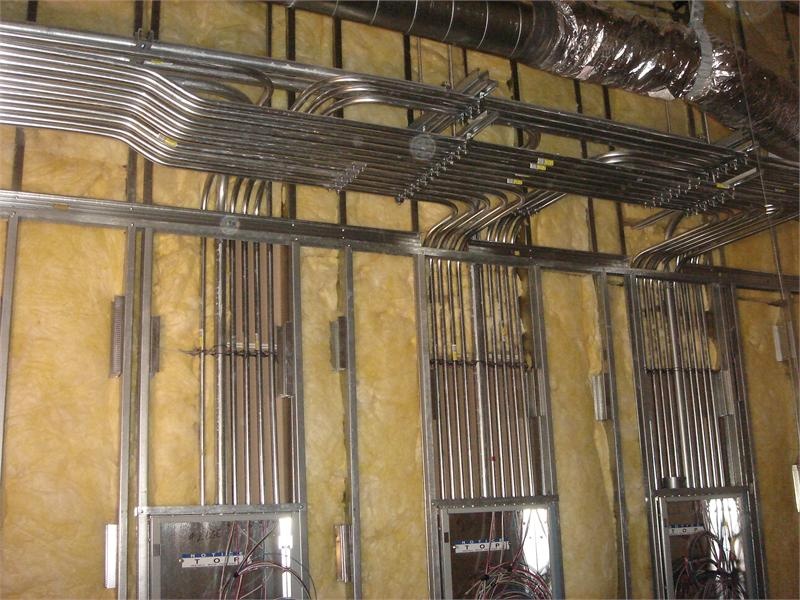The Future of Lighting has Arrived [Part 3]
Wendell D. Strong, GENISYS PoE Lighting Manager
Sometimes it makes sense to go “Back to the Future”, so to speak, in order to have a better perspective. In this case, to 1998 in Tucson, Arizona.

A gathering is occurring of “stakeholders” in the lighting world. About 60 people are about to participate in a brainstorming session. It is the second meeting launching “Vision 2020 – The Lighting Technology Roadmap” being hosted by the DoE. Yours truly is in the room as a participant.
are about to participate in a brainstorming session. It is the second meeting launching “Vision 2020 – The Lighting Technology Roadmap” being hosted by the DoE. Yours truly is in the room as a participant.
It was one of the most fascinating lighting events I have ever been a part of. As we were identifying the multiple disconnects that were preventing lighting technology from being more quickly adopted, a woman in the back of the room asked a question that still resonates with me to this day.
“Why do we insist on selling lighting as if it were an ice cream cone and base its value on how many calories it contains”?
The room remained quiet in a moment of reflection and self condemnation it seemed.
How did lighting get reduced to being a base commodity being treated both then and now primarily as a cost per square foot proposition?

Why do I raise this point? In my previous articles, I have pointed out some of these disconnects. Now I will focus on the main one.
Even though PoE Lighting technology is easily capable of saving 90% in energy, and reduces installation time and ongoing maintenance costs while creating a level of intelligence and ease of control which results in greater energy savings across time, we are still missing the point.
While interior lighting has been relied on by humans for comfortable and appealing settings in many venues from hospitality, education, healthcare, retail, office and environments of all types, we seem to have forgotten what its most primary contributions are.
Basic Functions of Lighting
The two most basic functions of lighting date back to prehistoric times and the discovery of fire which provided both safety and productivity to early humans. PoE Lighting technology can help us take those basic functions to whole new level.
In a commercial building, which is more: the utility costs including lighting or the employees working under the lighting? A pretty simply question, but one we should consider further.
Employees typically account for 90% of a company’s operating costs. Typically, operating costs breakdown as 1% for utilities, 9% for rent, and 90% for salaries and benefits.
We have known for decades that poor lighting has negative impacts on safety, performance and productivity. Additionally, numerous studies show when workers are asked what they would change about their personal work-space, over 50% wish to improve their lighting first and foremost. Up to now, the design standard in office lighting might be best described as only adequate.

What if we could harness the power of the PoE lighting control system, which is paying for itself on the energy consumption side of the business, and apply it to production side and take merely adequate lighting to personally optimized lighting?
Personally Optimized Lighting
What if a menu of positive lighting attributes were available to employees who then could pick and choose from them in order to customize their work-space on demand to their suiting?
Or, in healthcare, patients could control the lighting in their room / over their bed and doctors / nurses could override for treatments?
With the basic capability of changing both the color and intensity of the light, the employee is empowered to “dial in” their lighting to changing tasks as well as their personal preference to the ambiance of the work-space.
For example, I am writing this article under warm color lighting (3000k) at low intensity (35%) as that is the combination which works best for me while being creative. My overall preferred color for detailed work is 5000K, however I normally run Daylight Rhythm (auto sunrise to sunset color and intensity control) as my default setting. Any changes are made from my smart phone, in seconds. That simple and that easy.

I referenced Vision 2020 at the beginning of this article, and I want to leave you the final Vision Statement itself as we are a mere 2.5 years away from that date:
“In 2020, lighting systems in buildings and other applications will:
- Enhance the performance and well-being of people
- Adapt easily to the changing needs of any user
- Use all sources of light efficiently and effectively
- Function as true systems, fully integrated with other systems rather than as collections of independent components
- Create minimal impacts on the environment during their manufacturing, installation, maintenance, operations, and disposal
As a result, people will understand, value, and utilize the tangible, personal benefits provided by these lighting systems.”
It would appear that PoE Lighting technology is well positioned to be the driver toward the embodiment of Vision 2020. Sometimes history is the best predictor of the future, especially when it planned to be. Expect more from your lighting system. Much more.
Check out Part one & part two of this three part series.




![Insights into the World of PoE Lighting Technology [ Part 1]](https://www.genisyslighting.com/GENISYS-blog/wp-content/uploads/2017/06/LEDs_Jane-1-1568x1043.jpg)



